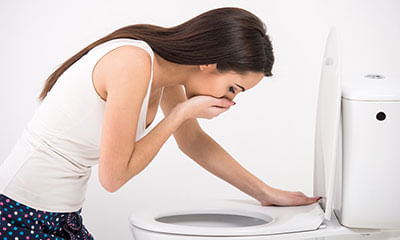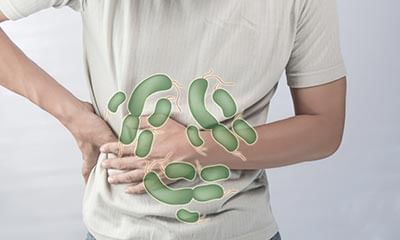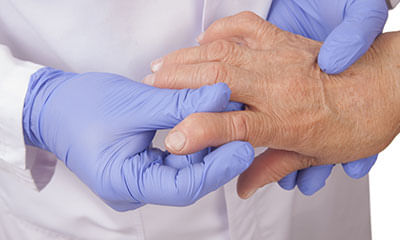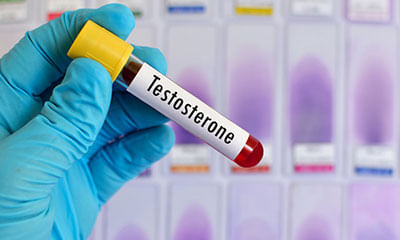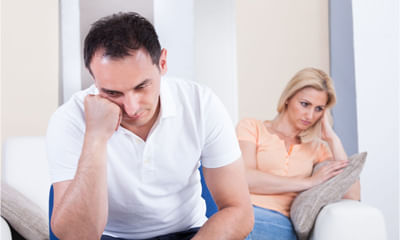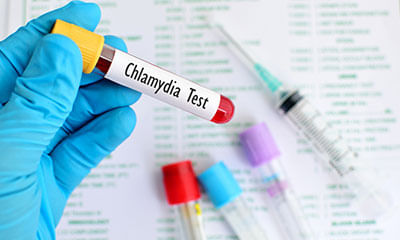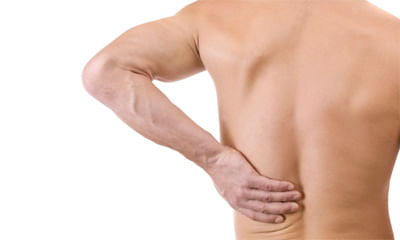Chronic Ear Pain Without Infection
I had food poisoning few weeks ago. I get precautions for a day. Next day I ate egg in morning so again I felt the same ...
Ask Free Question
Sometimes your body will not take few things as any other person. Do not blame yourself for it. Try to recognise what is causing. Sometimes its not just food, sometimes its uour emotion which can not take certain easy food to digest, sometimes a change of place. Recognise it asap or if not you can have a consultation and just by answering few random questions we can solve, what might be the underlying condition behind this.
Hello doctor, I am married planning to have kids in coming months from past 4 days I having low abdominal pain .in my ul ...
Ask Free Question
This is most likely pid. It is an infection. Need to be treared by antibiotics. If not treated timely, it may lead to complications like chronic pain, infertility.
My age 46 years female suffering with arthritis diagnosis as sjogren syndrome taking hcq and month tablets since 3 years ...
Ask Free Question
Reactive arthritis •reactive arthritis can affect the heels, toes, fingers, low back, and joints, especially of the knees or ankles. •though it often goes away on its own, reactive arthritis can be prolonged and severe enough to require seeing a specialist. Effective treatment is available for reactive arthritis. •reactive arthritis tends to occur most often in men between ages 20 and 50. •most cases of reactive arthritis appear as a short episode. Occasionally, it becomes chronic. •reactive arthritis is a painful form of inflammatory arthritis (joint disease due to inflammation). It occurs in reaction to an infection by certain bacteria. Most often, these bacteria are in the genitals (chlamydia trachomatis) or the bowel (campylobacter, salmonella, shigella and yersinia). Chlamydia most often transmits by sex. It often has no symptoms, but can cause a pus-like or watery discharge from the genitals. The bowel bacteria can cause diarrhea. If you develop arthritis within one month of diarrhea or a genital infection – especially with a discharge – see a health care provider. You may have reactive arthritis. •in the past, it went by the name “reiter’s syndrome.” now it belongs to the family of arthritis called “spondyloarthritis.” the type of treatment for reactive arthritis depends on the stage of reactive arthritis. The early stage of reactive arthritis is considered acute (early). Acute inflammation can be treated with nonsteroidal anti-inflammatory drugs (often referred to as nsaids). These drugs suppress swelling and pain. They include naproxen (aleve), diclofenac (voltaren), indomethacin (indocin) or celecoxib (celebrex). The exact effective dose varies from patient to patient. The risk of side effects of these drugs, such as gastrointestinal (often called gi) bleeding, also varies. Your doctor will consider your risk of gi bleeding in suggesting an nsaid. The late stage of reactive arthritis is considered chronic. Chronic reactive arthritis may require treatment with a disease-modifying antirheumatic drug (sometimes called a dmard) such as sulfasalazine or methotrexate. Sulfasalazine may be more useful when the reactive arthritis is triggered by a gastrointestinal (gi) infection. In some cases, very inflamed joints may benefit from corticosteroid injections (cortisone shots). In more severe cases, stronger immune lowering medications called “biologics” may be used such as etanercept (enbrel) or adalimumab (humira).
Hello, I am 20 years old. For the past week, I have been experiencing pain in my right testicle, and over time, the pain ...
Ask Free Question
Hello, testicular pain is a condition that can affect males at any age. The testicles (testes) are small egg-shaped reproductive (sex) organs inside a thin pouch of skin called the scrotum. Testicular pain is pain or discomfort that is felt in one or both testicles. The pain may originate from the testicles itself, or it may be the result of other conditions affecting the scrotum, groin or abdomen testicular pain can be an acute (short-term) or chronic (long-term) condition. The testicular pain may be constant or intermittent. Potential causes of testicular pain are varicocele, hydrocele, jerk, injury, twisting, kidney stones, infection, hernia, nerve damage, fluid buildup and inflammation. Many times testicular or scrotum pain is due to. When you are in sexual arousal mood for a long period of time without any discharge… example you are reading or watching porn material or you are with your girlfriend in a common place like in garden or somewhere. And you both are in a sexual mood while talking or reading or watching a porn material but there cannot be any discharge because of the public places. After that when you come out of that sexual arousal mood. You will feel a tremendous pain in your scrotum. But that is a temporary one and that pain is gone once if you masturbate or you do sexual intercourse or the pain goes in a day or two on its own. These are some steps you can take to reduce this pain. Wear an athletic supporter or langot or tight underwear to provide support 2 the testicles. Use ice packs. Place a rolled up towel under your scrotum if you’re lying down. Take warm baths. Try non-prescription pain relievers. You must do sonography of the scrotum and show the report to your family doctor or a surgeon. Most of the times when in the report it comes varicocele and hydrocele then the permanent solution is operation only website: www.kayakalpinternational.com.
After masturbating the burning inside the penis is not going it's been 3 days am bit sacred can you please help me with ...
Ask Free Question
Hello- a condition known as urethritis occurs when the urethra gets infected and inflamed. Some men can have urethritis and have no symptoms at all. But most men would experience burning pain while urinating, notice discharge from the penis, have the constant urge to urinate, endure itching around the groin area, and have a painful feeling inside the penis and painful ejaculations. Over-masturbation can be one of the factors that trigger the chronic prostatitis and urethral irritation that lead to urethritis. People that suffer from urethritis with a very high frequency of habitually masturbation can damage the varicose veins inside their penis. Bruising and painful ejaculations would occur often. Fortunately, it is curable.
Few days back detected with chlymedia consumed doxycycline for 14 days, now again mild symptoms are visible like frequen ...
Ask Free Question
Hi Mr. lybrate-user masturbation not affect on chlymedia, chlymedia is caused by bacteria. It is one of the most common sexually transmitted disease in india. This infection is common in young people (male and female) for first you test your urine and blood test, find out the diagnosis. For best treatment. Only net treatment not work. You required expert treatment (injection) for treatment and management of disease consalt privately videos consaltation or audio consaltation.
I have been masturbating since a long time. One day when I ejaculated, there was a sharp/cutting pain at the tip of my p ...
Ask Free Question
Hello- a condition known as urethritis occurs when the urethra gets infected and inflamed. Some men can have urethritis and have no symptoms at all. But most men would experience burning pain while urinating, notice discharge from the penis, have the constant urge to urinate, endure itching around the groin area, and have a painful feeling inside the penis and painful ejaculations. Over-masturbation can be one of the factors that trigger the chronic prostatitis and urethral irritation that lead to urethritis. People that suffer from urethritis with a very high frequency of habitually masturbation can damage the varicose veins inside their penis. Bruising and painful ejaculations would occur often.
I had the back pain due to a mild disc bulge. By now pain has gone after some medication. But I feel difficulty to walk ...
Ask Free Question
It looks like a muscle pain kindly do some exercises that may help you to get rid of your pain and regular stretch may help you to relax the muscles of your back and lower limbsthe exercises I personally recommend are listed below in the order I use with my patientsexercise #1: lying figure-4 stretch (for piriformis) in the early stages of a disc bulge, your body’s natural response is to tighten up and protect the spine and buttocks area. Because of this, one of the the simplest things you can do yourself to relieve radiating back pain caused my a disc bulge is stretching piriformis muscle. How to perform it: ● begin lying on your back with your knees bent and feet positioned flat on the floor ● place your right ankle over your left knee ● use your hands or a band to pull the left thigh towards your chest, and hold for 20 to 30 seconds ● repeat on the other leg ● aim for 3 repetitions on each side exercise #2: prone alternating leg raisesthe prone leg lift creates spinal extension helping push the jelly-like material back towards the center and reduce bulging disc. How to do it: ● lay face down with your palms on the floor under your forehead. ● straighten one leg then lift it a few inches off the ground with your toe pointed. ● lower your leg to the floor with your knee remaining straight. ● switch legs ● repeat 3 x 15 reps each side ● 3 x a day exercise #3: half cobra pose the half cobra pose creates spinal extension helping push the nucleus (jelly) back towards the center and reduce bulging disc. How to do it: ● begin this exercise by lying on your stomach (prone position) and slowly prop yourself up on your elbows while keeping your hips in contact with the floor. ● hold the prop-up position for 10-15 seconds before returning to the prone position (lying face down). ● gradually increase to holding the end position for 30 seconds. Aim for 10 repetitions of this stretch. ** initially, you may not be able to tolerate this position very well, so make sure you start slowly and carefully. Recommended: half cobra pose exercise video demo exercise #4: full cobra pose the full cobra pose creates even more spinal extension than half cobra helping push the nucleus (jelly) back towards the center and reduce bulging disc. How to do it: ● begin lying on the ground with your hands flat on the floor at the level of your shoulders ● slowly push your hands to raise your shoulder off of the ground until you feel a slight stretch ● increase your range of motion by exhaling as you push further into lumbar extension ● aim for 5 repetitions exercise #5: abdominal drawing maneuver a solid core foundation helps provide stability which in turn prevents re-injury and further injury from occurring. This will help reset the spine into neutral position. How to do it: ● lie on your back ● bend your knees ● contract your stomach muscle (abdominals) ● hold for 5 seconds ● release ● perform 3 x 20 sets daily athlete's foot (tineapedis) is a fungal infection that usually begins between the toes. It commonly occurs in people whose feet have become very sweaty while confined within tightfitting shoes. Signs and symptoms of athlete's foot include a scaly rash that usually causes itching, stinging and burning. Athlete's foot is contagious and can be spread via contaminated floors, towels or clothing. Athlete's foot is closely related to other fungal infections such as ringworm and jock itch. It can be treated with over-the-counter antifungal medications, but the infection often recurs. Prescription medications also are available. Symptoms athlete's foot usually causes a scaly red rash. The rash typically begins in between the toes. Itching is often the worst right after you take off your shoes and socks. Some types of athlete's foot feature blisters or ulcers. The moccasin variety of athlete's foot causes chronic dryness and scaling on the soles that extends up the side of the foot. It can be mistaken for eczema or even as dry skin. The infection can affect one or both feet and can spread to your hand — especially if you scratch or pick at the infected parts of your feet.
I've got a pain in my left side above my hip and below my ribs when it hits I can't breathe I can't walk I can't find a ...
Ask Free Question
Kidney pain vs. Back pain because your kidneys are located toward your back and= underneath your ribcage, it may be hard to tell if the pain you’re experiencing in that area is coming from your back or your kidney. The symptoms you’re having can help you figure out which is the source of the pain. The location, type, and severity of the pain are some of the things that will be different depending on whether the pain is from a problem in your kidneys or your back. How to identify kidney painkidney pain is most often caused by a kidney infection or a stone in the tubes coming out of your kidney. If the pain is coming from your kidney, it will have these features: where the pain is located kidney pain is felt in your flank, which is the area on either side of your spine between the bottom of your ribcage and your hips. It usually occurs in one side of your body, but it can occur in both sides. Type of pain kidney pain is usually sharp if you have a kidney stone and a dull ache if you have an infection. Most often it will be constant. It won’t get worse with movement or go away by itself without treatment. If you’re passing a kidney stone, the pain may fluctuate as the stone moves. Radiation of the pain sometimes the pain spreads (radiates) to your inner thigh or lower abdomen. Severity of the pain kidney pain is classified according to how bad it is — severe or mild. A kidney stone usually causes severe pain, and the pain from an infection is usually mild. Things that make it better or worse typically, nothing makes the pain better until the problem is corrected, such as by passing the stone. Unlike back pain, it usually won’t change with movement. Accompanying symptoms if you have a kidney infection or a kidney stone, you may also experience: •fever and chills •nausea and vomiting •cloudy or dark urine •an urgent need to urinate •pain when you urinate •a recent infection in your bladder •blood in your urine (this can happen with an infection or kidney stones) •small kidney stones that look like gravel in your urine how to identify back pain back pain is more common than kidney pain and is usually caused by a problem in the muscles, bones, or nerves in your back. Has the following features: where the pain is located back pain can occur anywhere on your back, but it’s most commonly located in your lower back or one of your buttocks. Type of pain muscle pain feels like a dull ache. If a nerve has been injured or irritated, the pain is a sharp burning sensation that may travel down your buttock to your lower leg or even your foot. Muscle pain may affect one or both sides, but nerve pain usually only affects one side. Radiation of the pain nerve pain may spread to your lower leg. Pain from a muscle usually stays in the back. Severity of the pain back pain is described as acute or chronic based on how long you’ve had it. Acute pain lasts days to weeks, subacute pain lasts six weeks to three months, and chronic pain lasts longer than three months. Things that make it better or worse back pain may get worse with movement or if you sit or stand for a long time. It may get better if you switch positions or walk around. Accompanying symptoms other symptoms you may experience with back pain include: •the painful spot looking swollen and feeling tender to the touch •a muscle spasm in the painful area •numbness or weakness in one or both of your legs (if the pain is due to a nerve issue) if you find you have back pain and can’t hold your urine or bowel movements, something is pressing on your spinal nerves, and you should be evaluated immediately. This condition, called caudaequina syndrome, can cause severe long-term damage to your spinal nerves if not treated right away. 6 imbalances that cause pain—and how to fix them "pain is a medical condition and a medical issue, says brett jones, owner of applied strength in pittsburgh who is certified for the functional movement screen, a system of tests and cor rective exercise strategies. "it's a warning sign. The pain is there to tell you something's wrong.
I am nozimul I am 21 year old I have been feeling pain on my back near kidney from many days and I also felt burning on ...
Ask Free Question
Kidney pain vs. Back pain because your kidneys are located toward your back and= underneath your ribcage, it may be hard to tell if the pain you’re experiencing in that area is coming from your back or your kidney. The symptoms you’re having can help you figure out which is the source of the pain. The location, type, and severity of the pain are some of the things that will be different depending on whether the pain is from a problem in your kidneys or your back. How to identify kidney painkidney pain is most often caused by a kidney infection or a stone in the tubes coming out of your kidney. If the pain is coming from your kidney, it will have these features: where the pain is located kidney pain is felt in your flank, which is the area on either side of your spine between the bottom of your ribcage and your hips. It usually occurs in one side of your body, but it can occur in both sides. Type of pain kidney pain is usually sharp if you have a kidney stone and a dull ache if you have an infection. Most often it will be constant. It won’t get worse with movement or go away by itself without treatment. If you’re passing a kidney stone, the pain may fluctuate as the stone moves. Radiation of the pain sometimes the pain spreads (radiates) to your inner thigh or lower abdomen. Severity of the pain kidney pain is classified according to how bad it is — severe or mild. A kidney stone usually causes severe pain, and the pain from an infection is usually mild. Things that make it better or worse typically, nothing makes the pain better until the problem is corrected, such as by passing the stone. Unlike back pain, it usually won’t change with movement. Accompanying symptoms if you have a kidney infection or a kidney stone, you may also experience: •fever and chills •nausea and vomiting •cloudy or dark urine •an urgent need to urinate •pain when you urinate •a recent infection in your bladder •blood in your urine (this can happen with an infection or kidney stones) •small kidney stones that look like gravel in your urine how to identify back pain back pain is more common than kidney pain and is usually caused by a problem in the muscles, bones, or nerves in your back. Has the following features: where the pain is located back pain can occur anywhere on your back, but it’s most commonly located in your lower back or one of your buttocks. Type of pain muscle pain feels like a dull ache. If a nerve has been injured or irritated, the pain is a sharp burning sensation that may travel down your buttock to your lower leg or even your foot. Muscle pain may affect one or both sides, but nerve pain usually only affects one side. Radiation of the pain nerve pain may spread to your lower leg. Pain from a muscle usually stays in the back. Severity of the pain back pain is described as acute or chronic based on how long you’ve had it. Acute pain lasts days to weeks, subacute pain lasts six weeks to three months, and chronic pain lasts longer than three months. Things that make it better or worse back pain may get worse with movement or if you sit or stand for a long time. It may get better if you switch positions or walk around. Accompanying symptoms other symptoms you may experience with back pain include: •the painful spot looking swollen and feeling tender to the touch •a muscle spasm in the painful area •numbness or weakness in one or both of your legs (if the pain is due to a nerve issue) if you find you have back pain and can’t hold your urine or bowel movements, something is pressing on your spinal nerves, and you should be evaluated immediately. This condition, called caudaequina syndrome, can cause severe long-term damage to your spinal nerves if not treated right away.

